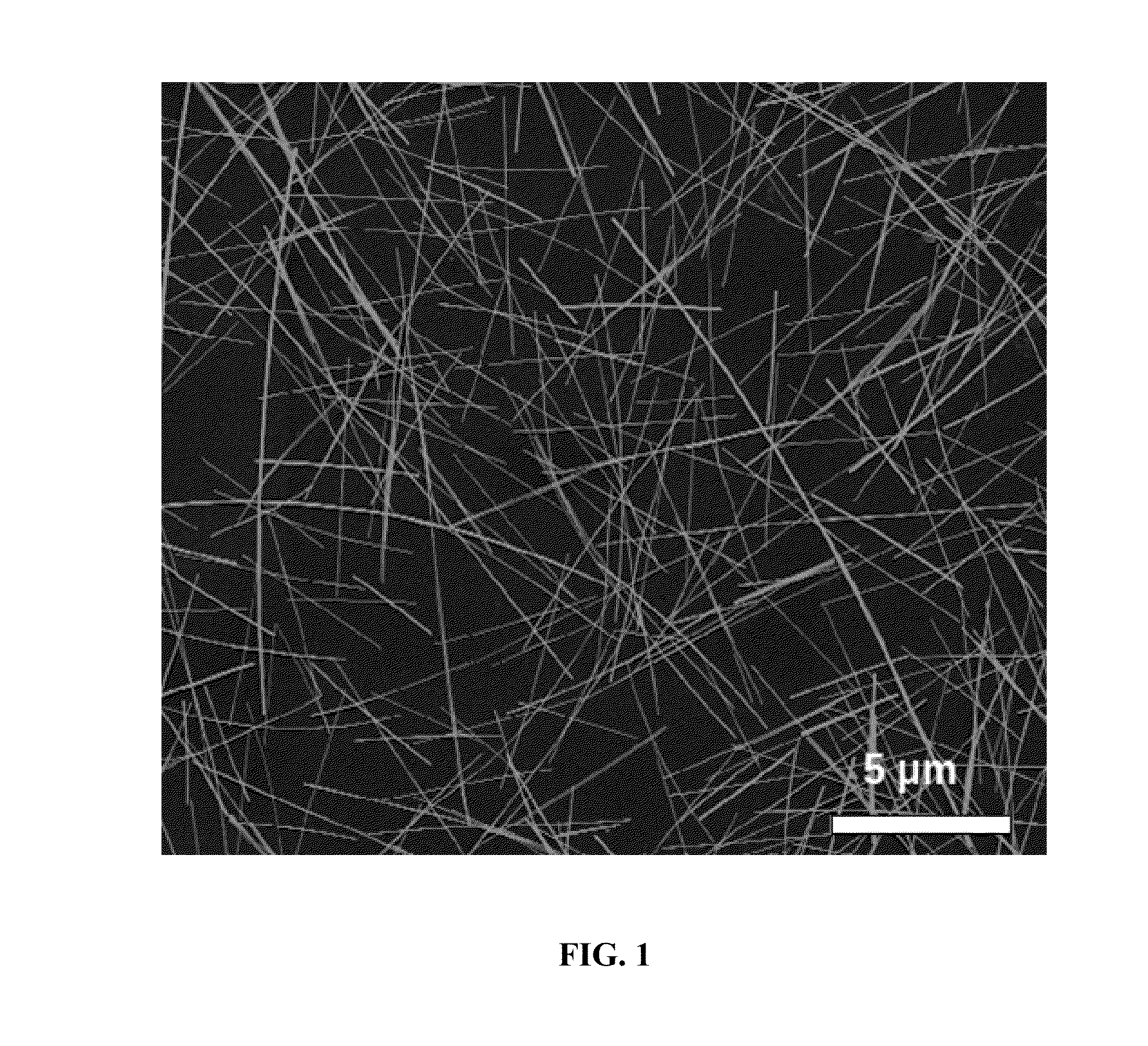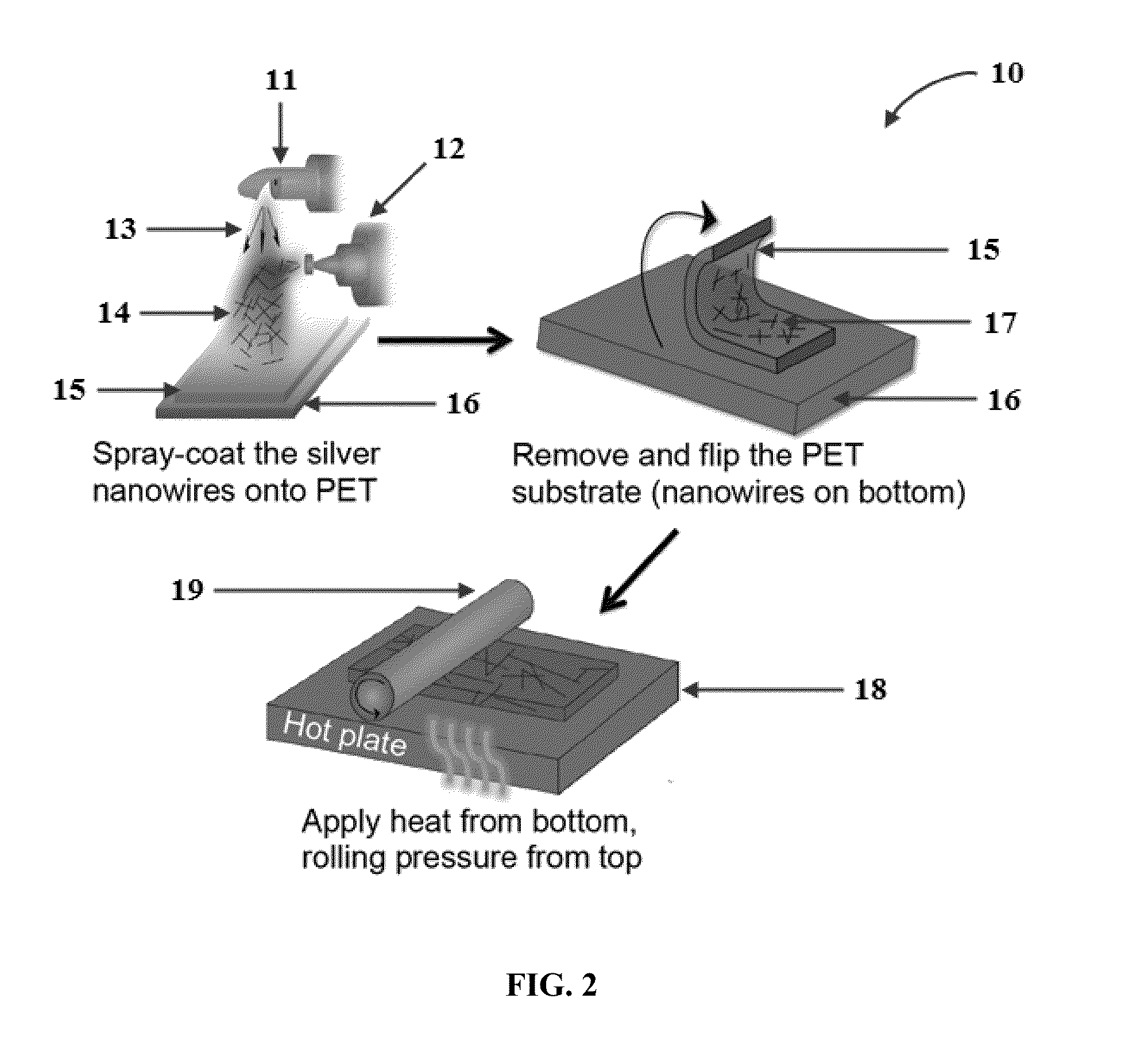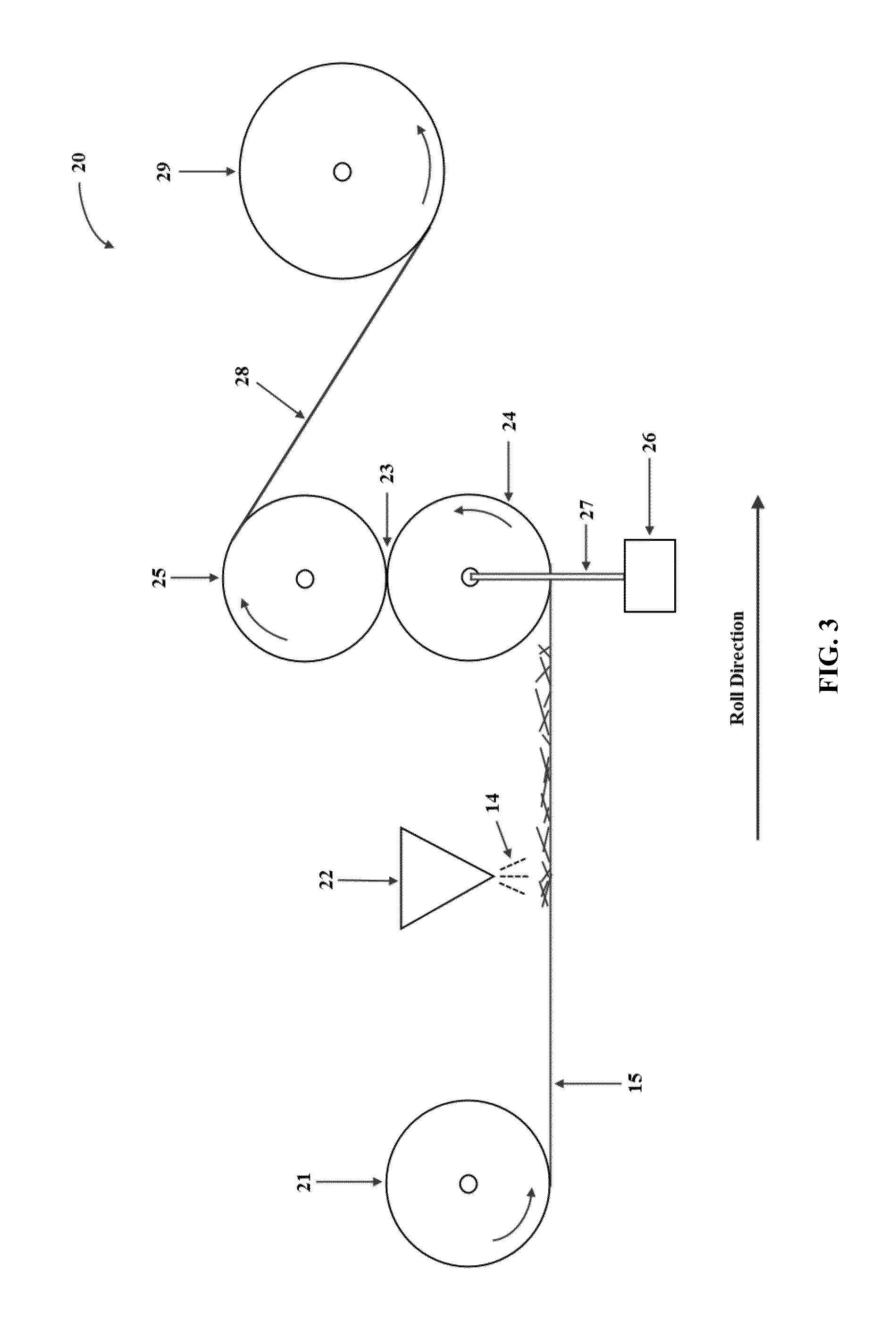Process for making materials with micro- or nanostructured conductive layers
a technology of conductive layers and materials, applied in the direction of sustainable manufacturing/processing, mechanical vibration separation, final product manufacturing, etc., can solve the problems of low processing cost, complex and time-consuming modifications, and need for a bendable replacement with low processing cost, and achieve cost-efficient and scalable effects
- Summary
- Abstract
- Description
- Claims
- Application Information
AI Technical Summary
Benefits of technology
Problems solved by technology
Method used
Image
Examples
example 1
Materials and Methods for Transparent / Translucent Electrodes
[0068]Materials.
[0069]100 micron-thick PET film substrates were provided by SABIC; the Tg of the PET film was reported to be 75° C. Lithium fluoride (LiF), silver chloride (AgCl), potassium bromide (KBr), silver nitrate (AgNO3), polyvinylpyrrolidone (PVP) and ethylene glycol were purchased from Sigma Aldrich and used without any further purification. Solvents were purchased from available commercial sources and used as received unless mentioned otherwise. Aluminum was received in pellets from Kurt J. Lesker. For the active layer of the OPV devices, the PC61BM and P3HT were purchased from American Dye Source and Reike Metals Inc., respectively. PEDOT:PSS (PVP AI 4083) was purchased from Heraeus. ITO was purchased from Delta Technologies and had a sheet resistance of 8-12Ω / □. Before organic photovoltaic device fabrication the ITO was cleaned with successive 10 minute sonication steps in methylene chloride, deionized water, an...
example 2
Results for Transparent / Translucent Electrodes
[0080]Produced Conductive Materials:
[0081]Silver nanowires with diameters of 50-100 nm, and lengths of 5-10 microns were prepared via a straightforward solution phase procedure (Hu, et al., 2010). A representative example of a spray-coated silver nanowire mesh on PET is shown in the scanning electron microscope (SEM) image in FIG. 1. The commercial PET films from SABIC were 100 microns thick, with a reported Tg of 75° C. and a Vicat softening temperature of 79° C. and 75° C. for the Vicat A and Vicat B tests respectively. FIG. 2 provides the schematic outline of the electrode processing described: the silver nanowires were spray-coated onto cleaned PET, removed from the spray-coater, and turned over onto a polished stainless steel hot plate with the nanowires in contact with the hot plate surface at the desired temperature. The back of the PET film was then rolled with a stainless steel rod (radius=30 mm), and then removed and allowed to...
example 3
Reflective Electrode Data
[0097]Reflective electrodes using a transparent substrate (PET) were prepared in the same manner discussed above in Example 1 with one difference. Additional nanowires were used to increase the reflectivity of the resulting electrode. FIGS. 12A and 12B provide normal and total reflection data, respectively. The plots in FIGS. 12A and 12B show a comparison between optically thick electrodes that are as deposited, meaning sprayed on the PET and left as is, and processed, meaning sprayed followed by rolling with pressure / heat. The dashed line represents the as-deposited sample while the solid is the processed sample. There is an increase in both the normal reflection and total reflection. Normal reflection refers to specular reflection where in incident angle is equal to the output angle. In this case the angle of incidence was small (˜8°) which can be approximated to normal. The total reflection was measured using an integrating sphere and compared against cer...
PUM
| Property | Measurement | Unit |
|---|---|---|
| Fraction | aaaaa | aaaaa |
| Fraction | aaaaa | aaaaa |
| Fraction | aaaaa | aaaaa |
Abstract
Description
Claims
Application Information
 Login to View More
Login to View More - R&D
- Intellectual Property
- Life Sciences
- Materials
- Tech Scout
- Unparalleled Data Quality
- Higher Quality Content
- 60% Fewer Hallucinations
Browse by: Latest US Patents, China's latest patents, Technical Efficacy Thesaurus, Application Domain, Technology Topic, Popular Technical Reports.
© 2025 PatSnap. All rights reserved.Legal|Privacy policy|Modern Slavery Act Transparency Statement|Sitemap|About US| Contact US: help@patsnap.com



